At the presentation in Mallorca we briefly drove the Golf GTD Variant with the new 7-speed DSG gearbox; the GTI, which now produces 230 hp; and the 150 hp 2.0 TDI Sport. Basically we have to talk about an aesthetic update and infotainment systems, in the rest of the car the changes are discreet. The starting price is 20,150 euros for the 1.0 TSI Edition, which includes 1,300 euros of equipment at no cost.
The 1.2 TSI and 1.4 TSI engines disappear from the range, as well as the Bluemotion versions (like the one in the test we published last week). The 1.5 TSI EVO engine, which will arrive almost in summer, could not be tested (there were no units for everyone). The Spanish range is configured according to local demand, so there are models that will not come, like the basic models for the German market, the 130 hp Bluemotion and the like. Later on, the e-Golf, GTE and Golf R will be introduced.
Without further ado, let's see what the new Golf has in store for us.
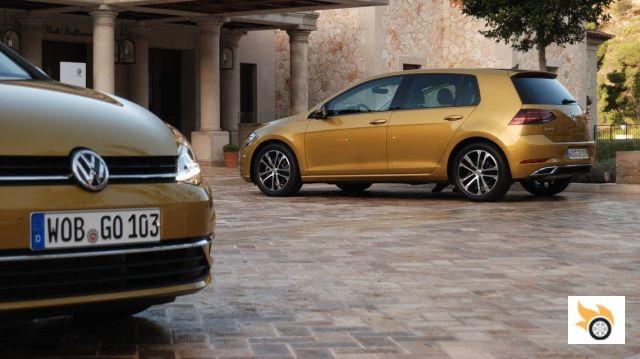
The design changes
Let's start at the front, where the grilles, light clusters and bumpers have been changed. Depending on the version the bumpers are different, the GTD and GTI are still different from the normal models, and we must also talk about the family version (Alltrack). Volkswagen keeps the three-door version despite a shrinking market, but the Golf has a lot of volume and can afford it.
The VW logo hides the microwave radar (if any) behind the VW logo, instead of under a plastic cover.
Integral LED light clusters replace all xenon units, are standard on the most equipped models, and optional on the others. The basic models get LED daytime running lights with halogen headlights. In the case of the GTI we will find inside the headlight a bicolor red and white signature, which also wants to continue the chrome strip that runs across the width of the car. Laterally only change the tires, in the Spanish market will not go out for the moment any Golf with hubcaps. New colors also make an appearance, such as mustard yellow.
At the rear all the light clusters are now LED, they save energy, are more durable and look much better. On the more equipped versions, the turn signal indicators are animated - similar to the KITT scanner effect - and the difference between the position and brake function is more noticeable. Relax, it's very clear when a Golf brakes, regardless of its price. On the Sport models, a fake exhaust outlet has been added by means of chrome, something that doesn't make much sense in this car.
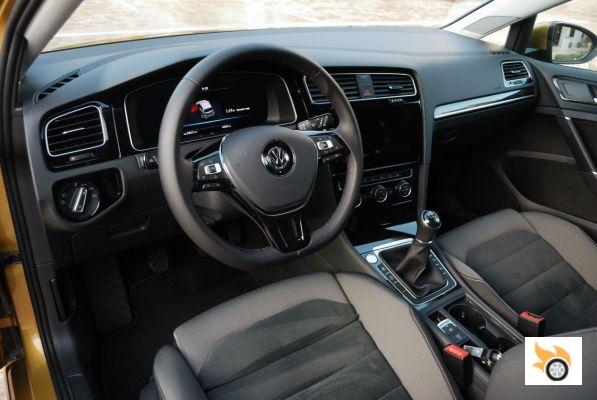
Inherits technological solutions from Audi
Last year both the Audi A4 and Q7 debuted sophisticated, game-changing technologies in the dashboard and infotainment systems. The base Golfs will still have an analog instrument cluster with dials and a digital center display, but above it - optional on Advance, standard on Sport or above - receives a 12.3″ digital display, with a resolution of 1,440 x 540 pixels.
This screen integrates information from the on-board computer, driving aids, stereo, traffic alerts, navigation, etc. to a level never seen before in the brand. It provides a lot of information, so much that it can overwhelm veteran drivers with technophobia. Even yours truly, who has been more than used to technology since he was crawling, needs some time to keep track of all the functions without taking his eyes off the road. Sometimes finding something very specific becomes tricky.
The top system, Discover Pro, is a piece of work that deserves an in-depth article just for it.
On the other hand, all infotainment systems from the previous generation (MIB) are replaced by new 6.5″, 8″ and 9.2″ units. In the case of the most sophisticated and largest one, the Discover Pro, it recognizes the hand gesture swiping from side to side, which can be useful punctually. Not only has the visual integration of the screens improved, they also have more functionality in multiple ways. When asked how long they can last... the head of technology, Kai Höbrink, said that the entire life of the car, a deterioration equivalent to 20 years of use is simulated. Some interior materials have also been improved.
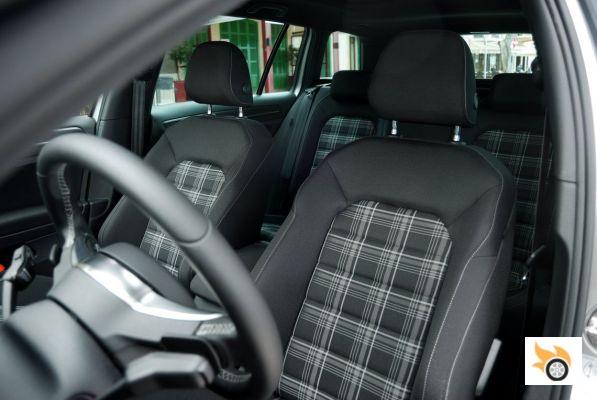
Apps come to the Golf via the App Connect module, which works with Android Auto, Apple Carplay and MirrorLink. This feature is standard across the range. Among the many possibilities of the system is an application that allows you to open the door of your home to family, friends or delivery people, Doorbird. The car itself can have its own Internet connection via a 4G SIM card, which is not only used for the optional connected services (Car-NET "Security & Service" and "Guide & Inform"), but also for sharing the connection with passengers. You can view navigation with Google Earth, listen to digital radio, social networks... among other things.
These connected services are paid separately, for example, the "Security & Service" costs 300 euros plus tax, includes 10 years of emergency call and three years of services that then have to be renewed. And what does it allow? You can locate the car in case of theft, or by giving the keys to a family member or friend of dubious credibility you can find out if it runs too much or if it has gone beyond the configured geographical area. In other words, the car is equipped with a warning device... More details can be found on the Volkswagen website.
Last but not least, the safety systems are better than ever.
It has - as standard or as an option - automatic braking with pedestrian detection, semi-automatic driving in traffic jams, automatic stop if the driver doesn't respond (e.g. in an epileptic seizure or drowsiness), lane keeping assistant, trailer parking assistance, automatic parking, etc. These systems are not a guarantee of anything, but it is better to have them than not to have them. For example, if you don't take the wheel for several seconds - if you can read the lines on the road - the assistance is not interrupted, but it will give a couple of brakes to wake you up. If there is no response, the car will try to stop on the hard shoulder to avoid major problems.
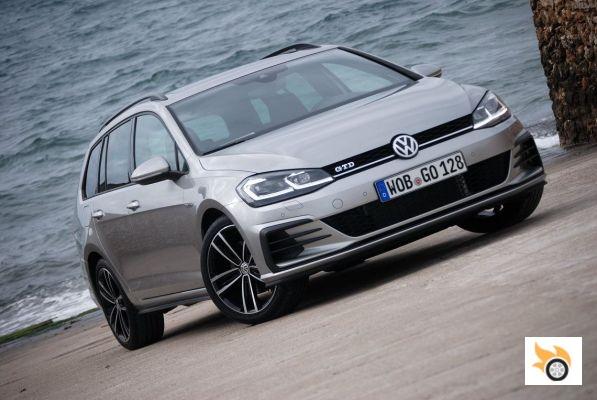
This is how the new Golf GTD and GTI are doing
The supertanker of the range produces 184 hp, is the GTI that the pockets of the most trotters can withstand. In this case the engine hasn't gained a single horsepower, but it gets the new seven-speed DSG automatic gearbox. For more than 10 years the highest-powered Golf TDIs were only available with a six-speed automatic. What's changed? Improved staggering, it gets 0.3 l/100 km less. The GTD almost escapes registration tax, almost! The DSG-6 gearbox disappears from the range.
With the new gearbox the Golf GTD accelerates from 80 to 120 km/h in just 6 seconds, the same as the manual in 4th gear. Acceleration from 0 to 100 km/h takes 7.8 seconds in the worst case, the Variant body, 7.4 seconds in the case of a compact. Top speed is also impressive for a petrol car, 230-231 km/h. It's a very decent performance, and consumption is very reasonable even if we have a very heavy foot. With a petrol we can't say the same.
The engine is energetic and full of life, it has more than enough power for the immensity of mortals.
The consumption obtained in the test is not representative, as in any presentation, but under 7 l/100 km considering the accelerations and the way of driving seems to me a good figure. The driving experience has nothing to do with the first TDI DSG, and I say this because I took a Golf V 2.0 TDI DSG when it was released. The engine has gained so much refinement that you sometimes forget you're driving a diesel, and it even sounds good in some acceleration phases. Like Mercedes' 7G-DCT transmission, it's a pleasure to drive a diesel like this, the ugliness of the engine is concealed by the electronics.
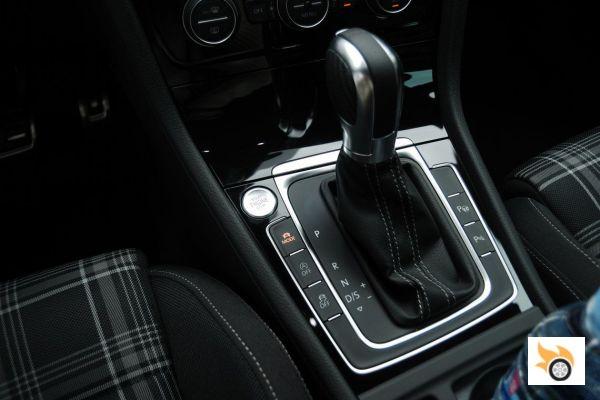
But it's still not a GTI, and this one has gained power. The "normal" GTIs now deliver 230 hp, so they recover from 80 to 120 km/h in just 5 seconds, and accelerate to 100 km/h in 6.4 seconds, with a top speed of 250 km/h. On the outside they are instantly recognizable, dual exhaust tailpipes (one pipe at each end), more aggressive bumpers and two-tone LED headlights. It's one of the most interesting front-wheel-drive compacts out there, and the GTI Performance now puts out 245bhp.
The drive was brief, but intense. The Golf GTI has an impressive reserve of acceleration, so much so that the roads are often too small and you have to think of specific routes to enjoy it more without being a danger, or risking half a driving licence if there's a hidden speed camera. Sometimes the engine gives more power than the wheels can digest, and that's when you miss the all-wheel drive. In those conditions you have to lift your foot a bit.
It runs hard and it runs well, it's a convincing sports car considering it's derived from a compact generalist.
I tested the Golf GTI with a six-speed manual gearbox. I loved the detail of the little Golf ball at the top of the knob, but I didn't like the feel, I found it a bit mushy for a Volkswagen, I remember the feel of their gearboxes from the generation IV, as the driving school car is never forgotten. I'm about to recommend the Golf GTI with DSG gearbox just for that little detail. As for braking, stability... that hasn't changed at all, it's still a great car, although you can find better things for the same price.
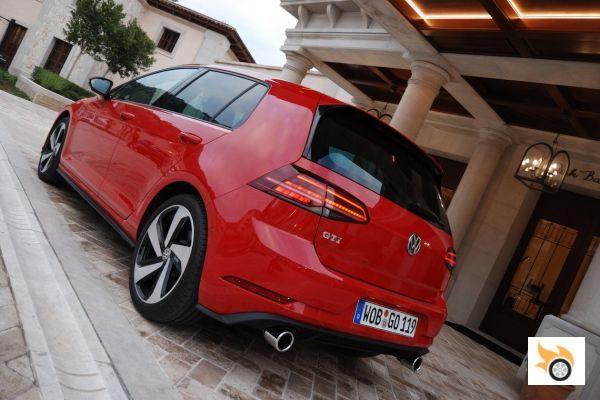
Greener engines... for when?
Neither the new 1.5 TSI EVO nor the updated 1.0 TSI, 1.8 TSI or 2.0 TSI come with a particulate filter yet. Jörg Theobald, responsible for powertrain development and alternative energies, explained it to me: particulate filters will first come to the Tiguan 1.4 TSI and then to the rest of the engines, in time to meet Euro 6c. I'm afraid it won't be possible to add the filter afterwards, because in addition to the filter itself, several electronic systems are needed, such as particle measurement. Even if they pay, they won't be able to put the filter on a model that doesn't have it.
As for the TDI engines, all come with urea injection to reduce nitrogen oxide emissions. Thinking about Volkswagen leads us to think about Dieselgate impepinablemente, but it must be said that the new TDI are of the EA288 family, and independent data certify that they are the cleanest diesel you can buy today. The engines of the fraud were of a previous generation, the EA189, better known as TDI CR, because it was the first generation with common rail injection instead of the mythical pump-injector.
All Golfs are BMT, i.e. they have Stop&Start and regenerative braking.
In the Spanish market the Bluemotion petrol versions are not of interest, they have been sold very little. In Germany and other markets will be available later the 1.5 TSI EVO Bluemotion, capped at 130 hp (normally gives 150 hp), with greater thermal efficiency. The entry-level petrol engine is the 110bhp 1.0 TSI, which is rated at 4.8 l/100km; if it were Bluemotion (with optimised aerodynamics, gearbox and tyres) it would drop by almost half a litre.
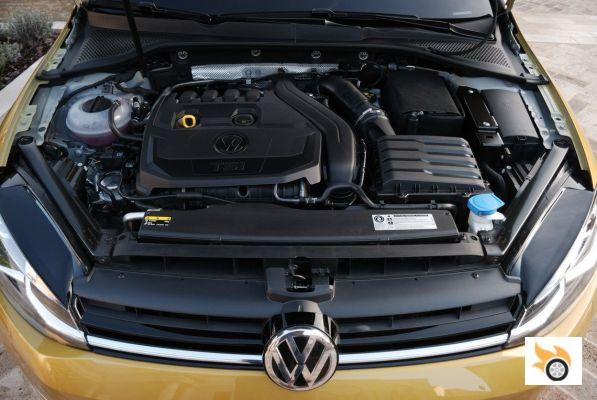
Before taking the plane back home, I briefly drove a 150 hp 2.0 TDI with manual gearbox. I have to say that I found the feel of the gear knob more satisfying than the GTI. With that level of power the Golf is a valid car for a very wide audience, the difference with the GTD isn't as pronounced, but it is noticeable when you put a lot of shoe or travel fast. I've also found it a very satisfying diesel, which is why I'm further distancing in my memory the tractor-like feel of the 1.9 TDI and 2.0 TDI pump injectors I played with in my younger years.
The 150 hp 2.0 TDI recovers a bit better than the 150 hp 1.5 TSI EVO, but the petrol accelerates with more agility; they tie in top end.
However, when I say "everyone", it's important to be clear. In Spain, the typical Golf buyer doesn't wonder whether to buy a Mazda3, a Honda Civic or a Ford Focus, at least according to the press department. Rather, they debate between buying a C Premium (A3, 1 Series, A...), a B-SUV (2008, Captur, Juke...) or even a D-segment saloon. The Golf's clientele is very stable despite being in a very changing market, the compact's market share is holding up well.
In Spain the basic versions -Edition- are the least sold of the general range, the GTI, GTD, GTE, e-Golf or Golf R are apart. The best sellers are the intermediate -Advance- with a 50% share, followed by the most equipped -Sport (Highline in other countries)- with 30%, leaving just under 20% for the Edition. The Bluemotion are residual, the same can be said of the natural gas TGI. At least Volkswagen allows you to choose, no compact on the market allows you to opt for gasoline, diesel, natural gas, pure electric or plug-in hybrid, things as they are.
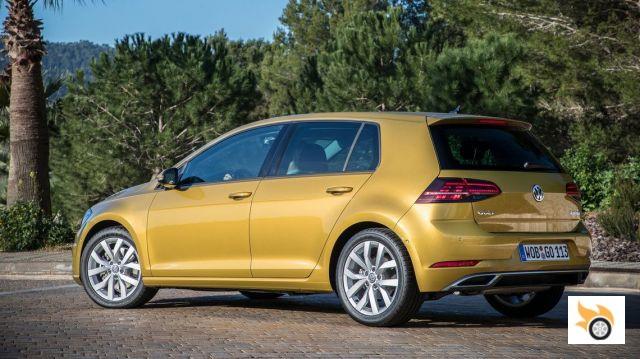
The Golf range is very rich and extensive, there are options, but then it is the customer who chooses. It is difficult to talk about bad Golfs or Golfs that are not recommended. From this article onwards I'll be considered more tali-VAG, for sure, but I don't give a damn. My job is to tell things as I feel them, and the car is good, it's good, period. Technologically it makes up a lot of ground against competitors like the Focus with SYNC or the Mégane with R-Link, and in many ways it's once again the benchmark compact on the market.
The rest of the car hasn't changed because it didn't need to. So there's no need to comment anything about the interior, trunk, etc.. The engines with manual gearbox in some cases homologate the same consumption as the outgoing model, and the dossier does not describe any change in the suspension or mechanical elements of importance. In other words: more beautiful, safer, more connected, more technological, a little more efficient, and the rest continues with the recipe for success released in 2012.
So, regardless of whoever it may concern, many brands will continue to consider the Golf as the compact of reference, I'm afraid.

























